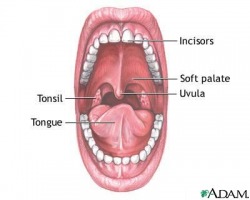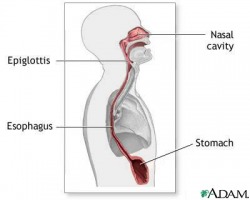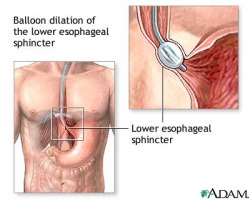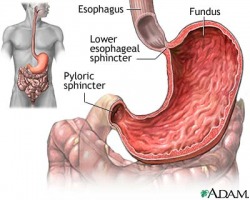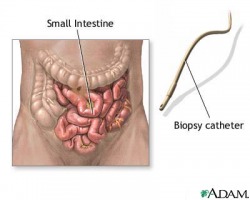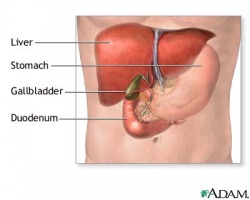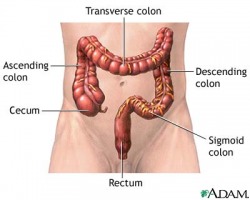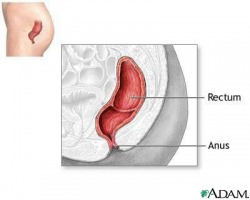The Digestive System
Functions:
- Converts food into energy
- Packs residue for waste removal
- Keeps body hydrated
- Converts food into energy
- Packs residue for waste removal
- Keeps body hydrated
Food begins its journey through the body in the mouth. Teeth break down the food into small parts, while saliva breaks down starch into more digestible sugars. The muscular tongue mixes the food with saliva to form a mass called bolus. Bolus is eventually pushed into the pharynx at the back of the mouth and then swallowed.
Then, food enters the esophagus, running behind the trachea. Peristalsis is a process involving circular contraction by smooth muscle to push food down.
Next is the stomach. But before food from the esophagus can enter the stomach, it has to pass through a sphincter (a muscular tube). Sphincters are located between major organs of the digestive tract - esophagus to stomach, stomach to small intestine (pyloric sphincter), small intestine to large intestine, and large intestine to rectum. These sphincters are meant to allow food to go in one direction down the digestive tract. However, when we vomit, sphincters open back up to allow food to travel the opposite way.
The stomach is a hollow organ which secrets enzymes and digestive juices to break food down even further so that the body can digest its proteins. The mixture of the food with the stomach's juices is called chyme.
After the stomach, food enters the most important organ of the digestive system: the small intestine, which is divided into three segments. The duodenum has a similar function to the stomach; it breaks down food using pancreatic enzymes and bile from the liver. The jejunum and ileum release the nutrients from the food (fatty acids, cholesterol and vitamins) into the blood stream to be absorbed. The small intestine, like the esophagus, uses peristalsis to move food.
The small intestine is aided by three organs: the pancreas, the liver, and the gallbladder. The pancreas secretes digestive enzymes directly into the duodenum, and it also produces the hormone insulin. Because of this, it is both an exocrine and an endocrine organ. The liver processes the nutrients absorbed by the small intestine, releases bile to break down fat, and is responsible for detoxifying the body. The gallbladder stores and secretes the liver's bile for the small intestine to use.
The rest of the digestive tract is meant for dealing with waste products. The large intestine prepares food to enter the bowels. This transformed state of food is called stool, a combination of food debris and bacteria. It takes stool about 36 hours to move through the colon.
The rectum holds the stool in the large intestine until it is ready to be excreted through an opening called the anus.
Enzymes of the Digestive System
Salivary Amylase - Produced by the mouth to break down polysaccharides
Pancreatic Amylase - Produced by the pancreas to break down polysaccharides
Maltase - Produced by the small intestine to convert maltose into glucose
Pepsin - Produced by the stomach to convert proteins into peptides
Trypsin - Produced by the pancreas to convert proteins into peptides
Peptidases - Produced by the small intestine to convert peptides into amino acids
Lipase - Produced by the pancreas to convert fat into glycerol and fatty acids
Salivary Amylase - Produced by the mouth to break down polysaccharides
Pancreatic Amylase - Produced by the pancreas to break down polysaccharides
Maltase - Produced by the small intestine to convert maltose into glucose
Pepsin - Produced by the stomach to convert proteins into peptides
Trypsin - Produced by the pancreas to convert proteins into peptides
Peptidases - Produced by the small intestine to convert peptides into amino acids
Lipase - Produced by the pancreas to convert fat into glycerol and fatty acids
Nutrients
Carboyhydrates
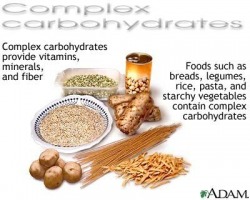
Carbohydrates, made of starches and sugars, begin digestion immediately in the mouth with saliva. In the small intestine, enzymes break carbs down into glucose, which gets absorbed through the intestinal walls and transported to the liver for storage. Carbs are a source of quick-burning energy, which is why sports teams love to have pasta parties the night before big games.
Proteins
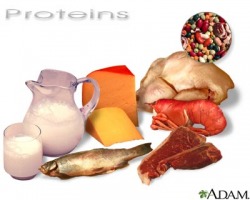
Proteins are made up of chains of amino acids. When proteins reach the stomach, their molecules become broken apart as they are absorbed into chyme. Enzymes in the small intestine extract amino acids that get absorbed through the intestinal walls, and then carried through the blood stream. After weightlifting, muscles are torn apart. Amino acids help rebuild muscles, so eating lots of protein after a workout is highly recommended.
Saturated Fats
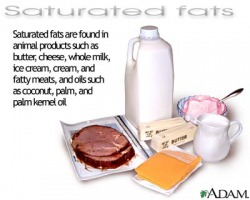
Fat comes in two forms: saturated and unsaturated. Saturated fat is the unhealthy kind. Bile in the small intestine breaks fat into fatty acids and cholesterol. Fat is stored around the body until it is needed for energy. Saturated fat raises the body's LDL (low-density lipoprotein) cholesterol. When too much LDL cholesterol circulates throughout the body, it can form plaque that clogs arteries carrying oxygen-rich blood, damaging the arteries. This condition is called atherosclerosis and can lead to stroke or heart attack.
Unsaturated Fats
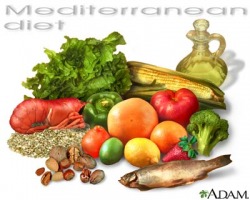
Unsaturated fats come in two forms: polyunsaturated and monounsaturated. Unsaturated fats, while containing more calories than saturated fats, are typically healthier. They raise the body's level of HDL (high-density lipoprotein) cholesterol which can remove plaque from arteries.
Vitamin A
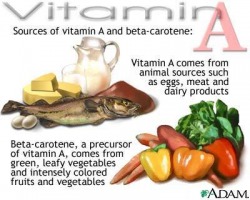
Vitamin A helps maintain eye health, aids in the growth of skin and mucous membrane, and promotes the development of teeth, soft tissue and skeletal tissue. It is a fat-soluble vitamin.
Vitamin B1
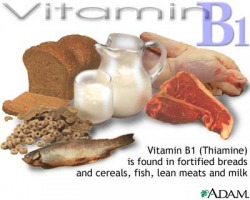
Vitamin B1, also known as Thiamine, helps convert food into energy and assists the cardiovascular and nervous systems. It is a water-soluble vitamin.
Vitamin B6
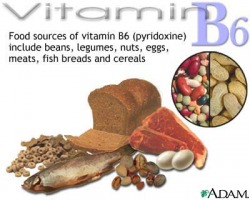
Vitamin B6, also known as Pyridoxine, is important for healthy brain function, formation of red blood cells, breakdown of proteins and synthesis of antibodies. It is a water-soluble vitamin.
Vitamin B12
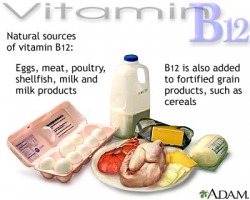
Vitamin B12, also known as Cobalamin, aids the metabolism, helps form red blood cells and assists in the maintenance of the central nervous system. It is a water-soluble vitamin.
Vitamin C
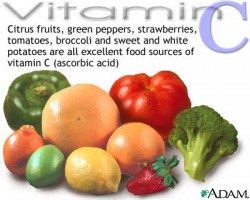
Vitamin C forms connective tissue, heals wounds, promotes a healthy immune system and aids in the absorption of iron. It is a water-soluble vitamin.
Vitamin D
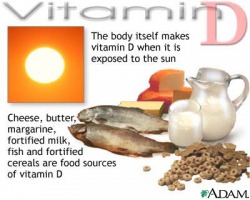
Vitamin D promotes calcium absorption. The integumentary system helps the body synthesize vitamin D from sun exposure. It is a fat-soluble vitamin.
Vitamin E
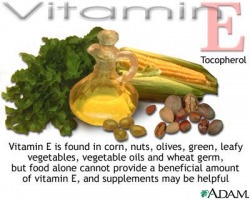
Vitamin E protects cell membranes and tissues from oxidation damage, aids in the formation of red blood cells, helps the body use Vitamin K and promotes a healthy circulatory system. It is a fat-soluble vitamin.
Vitamin K
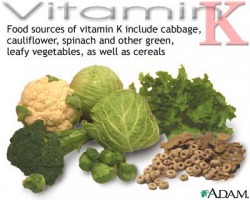
Vitamin K benefits blood clotting. It is a fat-soluble vitamin.
Images from: http://medlineplus.gov/
